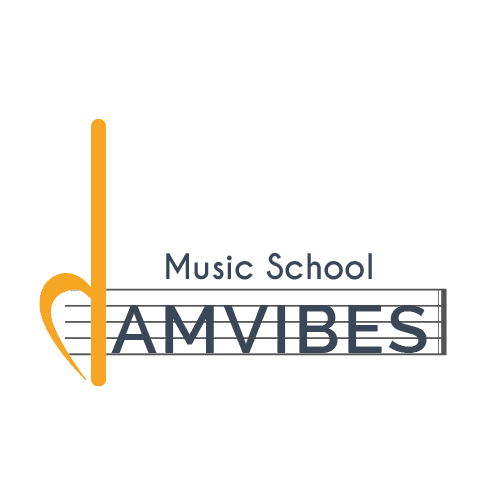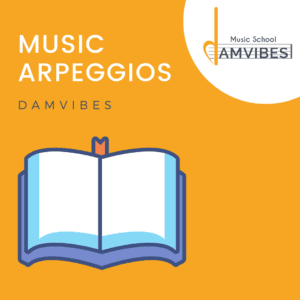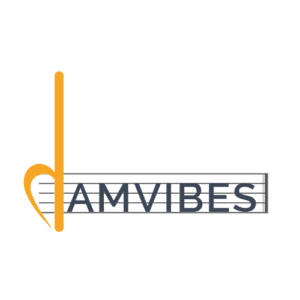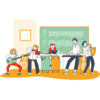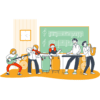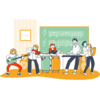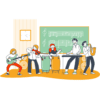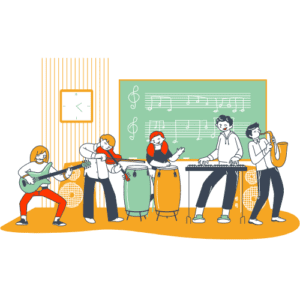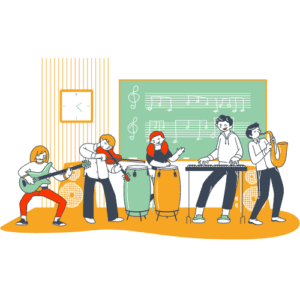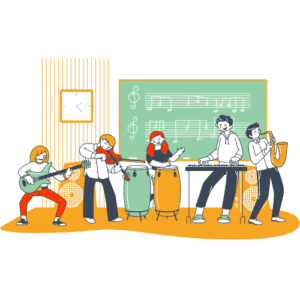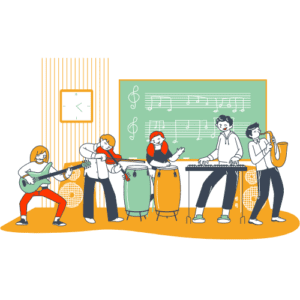Introduction to Music Arpeggios:
If you want to learn music or music theory in Amsterdam Music School one of the most important things you need to do is learning how to read notes, this way you will learn how to play faster your songs, pieces and all this music sheets you love!
What is "Arpeggios"? - Meaning and Definition
A musical arpeggio is nothing more than a chord, with the notes played successively instead of simultaneously. “Arpeggio” is an Italian term that comes from arpeggiare, which means “playing the harp”, and this name is due to the fact that it is a very common technique in this instrument.
Arpeggios and Chords. Is it the same?
We are always very clear about this; Technically an arpeggio is a way of playing or writing chords, so the truth is that an arpeggio is no more than a chord played successively instead of simultaneously.
4 Types (examples) of Arpeggios (in terms of chords)
As expected, we have as many arpeggios as chords, but just for you to have an idea about what we are talking about, we are going to explain 4 types, but first, if you are not familiarize with Intervals in Music, I recommend you read it before you continue
Major arpeggios
Here in the first measure we see the major chord of C, and in the second the arpeggio that comes from this chord. We see that between the fundamental note (C) and the third (E) there is an interval of Major Third, and that between the fundamental (C) and the fifth (G) there is an interval of Perfect Fifth.
![What are Arpeggios? - Definition & Meaning [4 TYPES] - Teacher 1 Major arpeggio](https://www.damvibes.com/wp-content/uploads/2022/09/Major-arpeggio-300x143.png)
Minor Arpeggios
Here in the first bar we see the minor chord of C, and in the second the arpeggio that comes from this chord. We see that between the fundamental note (C) and the third (E flat) there is an interval of Minor Third, and that between the fundamental (C) and the fifth (G) there is an interval of Perfect Fifth.
![What are Arpeggios? - Definition & Meaning [4 TYPES] - Teacher 2 minor arpeggio](https://www.damvibes.com/wp-content/uploads/2022/09/minor-arpeggio-300x114.png)
Augmented Arpeggios
Here in the first measure we see the augmented chord of C, and in the second the arpeggio that comes from this chord. We see that between the fundamental note (C) and the third (E) there is an interval of Major Third, and that between the fundamental (C) and the fifth (G sharp) there is an interval of Augmented Fifth.
![What are Arpeggios? - Definition & Meaning [4 TYPES] - Teacher 4 What are Arpeggios? - Definition & Meaning [4 TYPES] 3](https://www.damvibes.com/wp-content/uploads/2022/09/augmented-arpeggio-300x134.png)
Diminished Arpeggios
Here in the first measure we see the C triad diminished chord, and in the second measure the arpeggio that comes from this chord. We see that between the fundamental note (C) and the third (E flat) there is an interval of Minor Third, and that between the fundamental (C) and the fifth (G flat) there is an interval of Diminished 5th
![What are Arpeggios? - Definition & Meaning [4 TYPES] - Teacher 5 diminished arpeggio](https://www.damvibes.com/wp-content/uploads/2022/09/diminished-arpeggio-300x108.png)
Arpeggios and Scales
Like scales, “arpeggios” are just patterns of notes that follow one another in succession, and there are different kinds of them to learn. What we recommend is that you first learn harmony, this is to say, chords, so you can afterwards practice arpeggios.
Importance of Arpeggios
Enriching Chord Progressions: Arpeggios allow musicians to break down chords and play their individual notes in a flowing sequence. This enriches chord progressions and adds harmonic interest to the music.
Adding Expressiveness: Utilizing arpeggios in melodies and solos brings a heightened sense of expressiveness. The individual notes of the arpeggio can be emphasized, creating a more emotional and captivating musical experience.
Improving Technique: Practicing arpeggios improves a musician’s technical abilities, finger dexterity, and coordination. This, in turn, enhances their overall playing proficiency.
Utilizing Music Arpeggios
Soloing and Improvisation: Arpeggios are powerful tools for soloing and improvisation. Incorporate arpeggios that match the underlying chords of the song to create melodic lines that perfectly complement the harmony.
Melodic Embellishments: Use arpeggios to embellish melodies by inserting arpeggiated runs within the musical phrases. This can add sophistication and uniqueness to your compositions.
Creating Harmonic Transitions: Arpeggios can serve as a smooth transition between chords and key changes. Experiment with arpeggiated chord progressions to seamlessly move from one musical section to another.
Fingerstyle Accompaniment: In fingerstyle playing, arpeggios are commonly used to accompany vocals or other instruments. Practice different arpeggio patterns to add a captivating accompaniment to your music.
Conclusion
Arpeggios play a vital role in music, enriching compositions with harmonic interest, expressiveness, and technical prowess. Musicians can utilize arpeggios to elevate their playing and create captivating melodies and solos. By incorporating arpeggios into their compositions and practice routines, musicians can expand their musical toolkit and unlock a world of creative possibilities. Whether you’re a guitarist, pianist, or any other instrumentalist, mastering arpeggios will undoubtedly enhance your musical journey and captivate the hearts of your audience.
